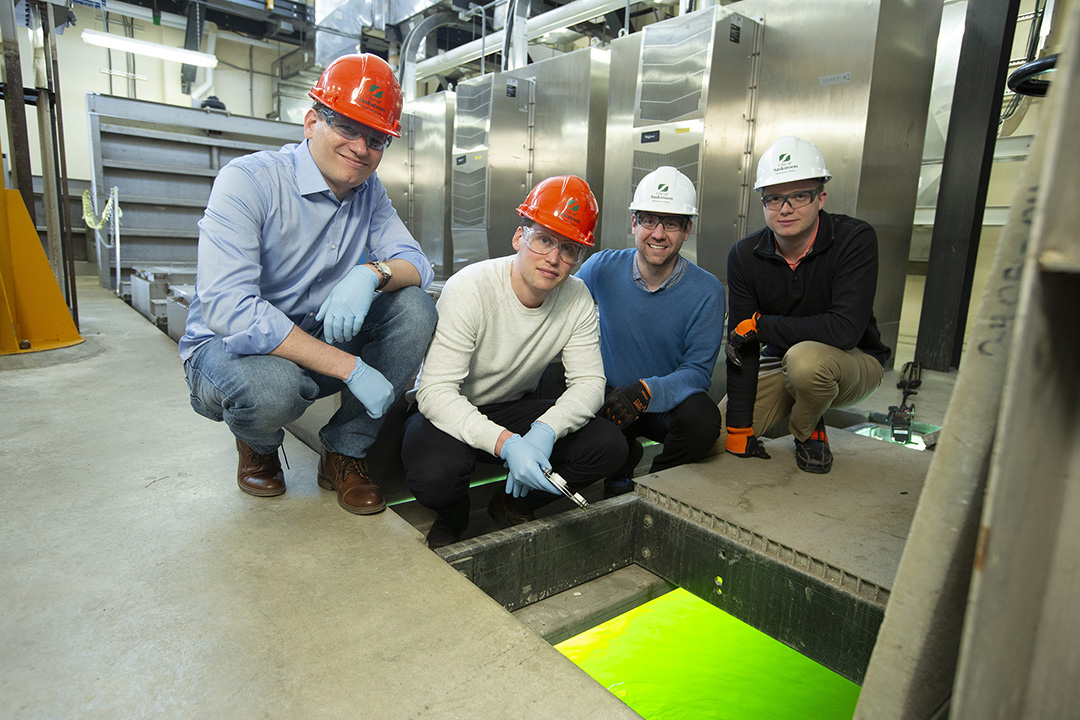
USask researchers and the City of Saskatoon discover drug, chemical concentrations in wastewater treatment plant
The identification of the presence of recreational drugs and industrial chemicals in Saskatoon’s wastewater system are just two of the discoveries coming from a University of Saskatchewan (USask) and City of Saskatoon research partnership.
For the first time, research was conducted on the presence of pharmaceuticals in both Saskatoon’s Wastewater Treatment Plant (WWTP) and the South Saskatchewan River (SSR). The study was led by USask’s principal investigator Dr. Markus Brinkmann (PhD) of the School and Environment and Sustainability, and City of Saskatoon’s WWTP Manager Mike Sadowski. The research was conducted with plant operators, who told researchers this type of systematic research had never been done before.
While their research originally focused on the level of pharmaceuticals in Saskatoon’s wastewater, their research also provided eye-opening results on how the initial lockdown due to COVID-19 affected the city. Even though levels in effluent were high enough to pose a risk to aquatic organisms, the pharmaceuticals measured—such as painkillers, anti-epileptics, beta-blockers, and antibiotics—were unlikely to pose a toxicological risk to organisms living in the SSR following dilution in the river water. In addition, industrial chemicals, illicit drugs, dyes and human drug metabolites were detected using screening-level analyses. These include methamphetamine, insecticides, and fabric and plastic dyes.
“These results provide important insights, as stresses on our freshwater resources are expected to increase due to various factors driven largely by climate change,” said Brinkmann. “The need to protect these increasingly sensitive freshwater ecosystems will only become more apparent.”
Brinkmann’s team conducted research on Saskatoon’s wastewater throughout 2020, through a grant supported by Research Junction. Research Junction is a collaboration between the City of Saskatoon and Research Acceleration and Strategic Initiatives to support the development of joint research projects that address contemporary urban issues for the benefit of Saskatoon residents.
“Right now, there aren’t any regulations on pharmaceutical contaminants under Canada’s Wastewater Systems Effluent Regulation, or restrictions in the provincial permit the Wastewater Treatment Plant operates under,” Sadowski said. “However, the city is taking steps toward protecting and conserving the South Saskatchewan River by partnering with Professor Brinkmann’s team in this regard.”
Brinkmann said the results of their study will serve as a baseline for future endeavours targeted toward decision-making around the need for future mitigation of these pharmaceutical chemicals.
The next steps for the team include looking at processes to aid in the reduction of these chemicals through the effluent process. They will also study how the pharmaceuticals affect sludge in the WWTP, which is stabilized and applied to farmland as fertilizer.
When asked about the Research Junction Discovery Grant program, Brinkmann said, “The strongest aspect of the program is the funding support to facilitate collaborative projects between the university and city partners. These types of partnerships are crucial for conducting applied research that can lead to actionable outcomes for the city partners, and direct benefits for Saskatoon’s residents.”
This joint wastewater project between USask and the city received acclaim for its achievements. Most notably, the project was recognized by the Smart 50 Awards, which honours innovative and influential work improving the quality of life for residents at the municipal level.

